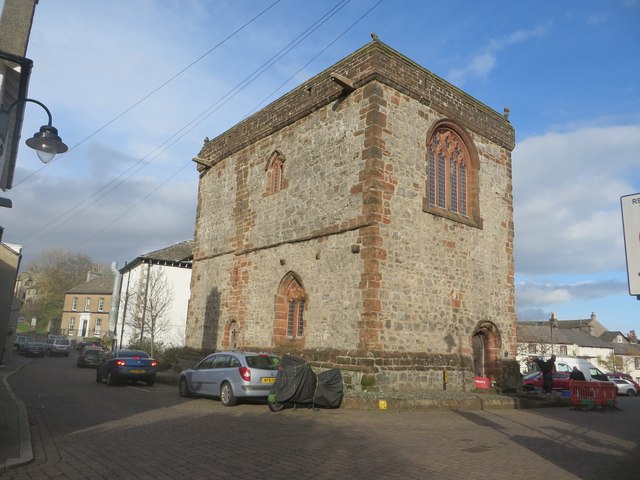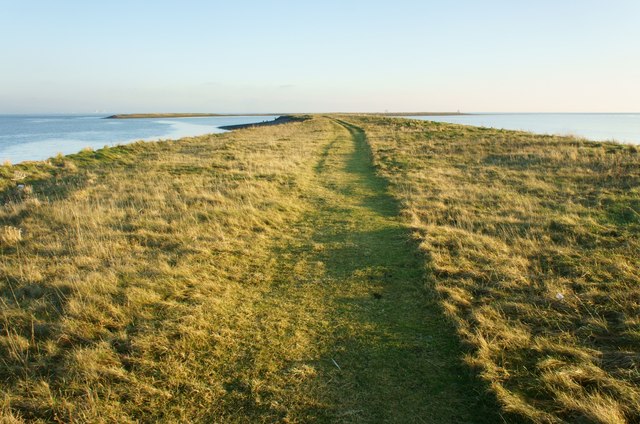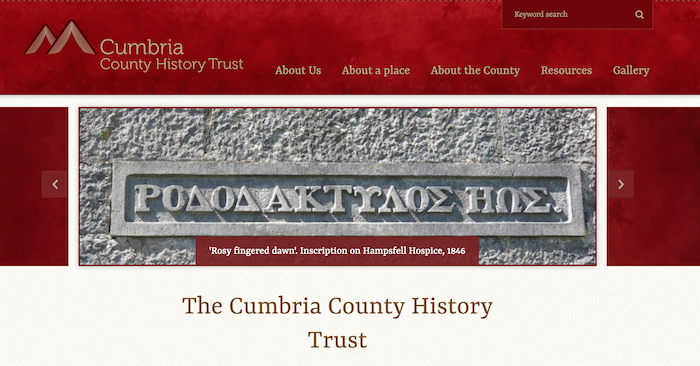Topics > Civil Parishes in Cumbria > Dalton with Newton Town Civil Parish > Dalton-In-Furness Parish, 1848
Dalton-In-Furness Parish, 1848
DALTON-IN-FURNESS (St. Mary), a market town and parish, in the union of Ulverston, hundred of Lonsdale north of the Sands, N. division of the county of Lancaster, 5 miles (S.W.) from Ulverston, and 265 (N.W. by N.) from London; containing, with the port of Barrow, the chapelries of Ireleth, Ramsyde, and Walney, and the townships of Yarleside and Hawcoat, 3,231 inhabitants. This place derives its name from its situation in a dale in the lower part of the district of Furness, of which it was formerly the chief town. According to Tacitus, Agricola, when he had conquered that district, erected a fort here for its protection; and the remains of a Roman road, discovered in 1803 by some workmen, at a considerable depth from the surface, confirm the probability of Dalton having been a Roman station, though there are no other vestiges except some slight traces of the fosse by which it was surrounded. The mount whereon the fort was built, upon examination, was found to be of artificial construction: it was defended on the south and west by steep precipices, and on the east by a rampart and ditch; and a brook which flowed at the base supplied the garrison with water.
The town derived its principal importance from the erection of the magnificent Abbey of Furness, founded in 1127, by Stephen, afterwards king of England, for monks of the Cistercian order, whom he removed from Tulketh, in Amounderness, to this valley, where, obtaining valuable grants, they continued for more than four centuries. The abbots were invested with extensive privileges, and enjoyed large possessions; they held in their own right the woods, pastures, fisheries, and mills of the district, and had considerable shares in the salt-works and mines. At the Dissolution, the revenue was valued at £966. 7. 10. The abbey formed a vast pile of buildings, the character of which was more that of simple magnificence arising from their extent, than of richness and beauty resulting from their style. The body of the church, with the lower portion of the transepts, is in the Norman style; the chancel, with the additions to the transepts, is early English, and the stone of better quality. The chapels, and the vestry on the east of the transept, are of less ancient date, and, together with the chapter-house and refectory, and conveutual buildings, of more elaborate execution: the stone of these parts, with the exception of being covered with a light-coloured lichen, is as perfect as when first used. The western tower, though very massive, is of the same elegant style, and built with the same kind of stone. A large portion of the ruins was cleared from the rubbish by which their features were concealed, and protected from further injury, by the late Earl of Burlington; but there is much still unexplored. The remains occupy a considerable part of an area of 65 acres, called the Deer Park, inclosed with a stone wall, in the sequestered vale of Bekang's Gill, about a mile and a half south of the town; the approaches are strewed with memorials of the abbots, and mutilated tombs. In the reign of Edward III., a castle, in which, during peaceable times, the abbots held their secular courts, was erected in the town, probably as a place of retreat for the inhabitants, and for the protection of their property, from the frequent predatory incursions of the Scots, of whose approach numerous beacons in this part of the country were kept in constant readiness to give notice. In the reign of Henry VIII., Lambert Simnel, the pretended earl of Warwick, landed at the Pile of Fouldrey, whence he proceeded to assert his claims to the throne; and during the war in the reign of Charles I., the town and neighbourhood were the scenes of frequent engagements between the hostile parties.
Dalton
DALTON is situated on the acclivity of a gradual eminence, and consists principally of one street, at the western extremity of which is the market-place; the houses, in general old, have in many instances given place to buildings of modern erection, and other improvements have been made, but the inhabitants are still indifferently supplied with water. The environs are pleasant, and favourable for the sports of the chase; the Dalton Hunt, established in 1703, has been discontinued since 1789. The trade is chiefly in malt, which is sold to a great extent; and the iron-mines in the vicinity, which have been worked for more than four centuries, produce annually many thousand tons of excellent ore. The market is on Saturday; the fairs are on April 28th, June 6th, and Oct. 23rd, the last a statute-fair. The castle, supposed to occupy a portion of the site of the fort built by Agricola, is at present appropriated to the holding of the manorial courts; it is a massive quadrilateral building of three stages, having the principal entrance on the south side, over which is a central window of three lights, surmounted by another of four lights with flowing tracery, in the decorated style. The parish comprises by computation 15,594 acres, of which about 12,344 are arable, 1,549 pasture, and 1,676 woodland, waste, etc.
The living is a discharged vicarage, valued in the king's books at £17. 6. 8., and in the patronage of the Crown, in right of the duchy of Lancaster; net income, £150, with a house; impropriator, the Earl of Burlington. The church, a structure of considerable antiquity, built on the declivity of a hill within the precincts of the ancient castellum, was enlarged in 1826 by the addition of an aisle and vestry, extending the whole length of the north side, of early English character, with a porch in the centre, having an enriched Norman arch; the south side has also been restored, and the whole, with the exception of the tower, has a very handsome appearance. There are chapels at Ireleth, Barrow, and in the Island of Walney; and a chapel at Ramsyde, lately rebuilt, in the later English style. The Wesleyans have a place of worship. The free grammar school was founded in 1622, by Thomas Boulton, who bequeathed £220, whereof £20 were to be laid out in the erection of a room, and the remainder in the purchase of land; the land produces £95 per annum. Another school is endowed with £10 per annum; and there are various charitable bequests for distribution among the poor. On High Haume, an eminence near the town, is a circular intrenchment, which appears to have been a fortified beacon; and on the Pile of Fouldrey, a rocky island separated from the Isle of Walney, are the ruins of a castle, thought by Camden to have been erected in the reign of Edward III., by the abbots of Furness, to defend the approach to the harbour. George Romney, the eminent historical and portrait painter, was born in the parish, in 1734.
Extract from: A Topographical Dictionary of England comprising the several counties, cities, boroughs, corporate and market towns, parishes, and townships..... 7th Edition, by Samuel Lewis, London, 1848.

Co-Curate Page
Dalton-in-Furness
- Overview About Dalton-in-Furness Map Street View Dalton-in-Furness is a historic market town in the Furness area of the ceremonial county of Cumbria. Dalton served as the secular administrative centre and …

Co-Curate Page
Rampside, 1848
- RAMSYDE, or Rampside, a chapelry, in the parish of Dalton-in-Furness, union of Ulverston, hundred of Lonsdale north of the Sands, N. division of Lancashire, 5¼ miles (S. by E.) from …

Co-Curate Page
Barrow in Furness, 1848
- BARROW, a village and sea-port, in the township of Hawcoat, parish of Dalton, union of Ulverston, hundred of Lonsdale north of the Sands, N. division of the county of Lancaster, …

Co-Curate Page
Foulney Island
- FOULNEY, an island, in the parish of Dalton-in-Furness, union of Ulverston, hundred of Lonsdale north of the Sands, N. division of the county of Lancaster, 7 miles (S. by E.) …

Co-Curate Page
Walney Island, 1848
- WALNEY, ISLE OF, a chapelry, in the parish of Dalton-in-Furness, union of Ulverston, hundred of Lonsdale north of the Sands, N. division of the county of Lancaster, 5 miles (S.W.) …

Co-Curate Page
Yarleside Township, 1848
- YARLESIDE, a division, in the parish of Dalton-in-Furness, union of Ulverston, hundred of Lonsdale north of the Sands, N. division of Lancashire, 2 miles (S.) from Dalton; containing 561 inhabitants, …

from https://www.cumbriacountyhist…
Dalton in Furness Parish
- "Ancient parish in Lonsdale hundred, Lancashire North of the Sands, covering much of southern end of Furness peninsula, and divided into four quarters or ‘bierleys’: Hawcoat, Yarlside, Above Town, and …
Added by
Simon Cotterill

Co-Curate Page
Ireleth, 1848
- IRELETH, a chapelry, in the parish of Dalton-In-Furness, union of Ulverston, hundred of Lonsdale north of the Sands, N. division of Lancashire, 3 miles (N.) from Dalton; containing 744 inhabitants. …


Co-Curate Page
Dalton-in-Furness
- Overview About Dalton-in-Furness Map Street View Dalton-in-Furness is a historic market town in the Furness area of the ceremonial county of Cumbria. Dalton served as the secular administrative centre and …

Co-Curate Page
Rampside, 1848
- RAMSYDE, or Rampside, a chapelry, in the parish of Dalton-in-Furness, union of Ulverston, hundred of Lonsdale north of the Sands, N. division of Lancashire, 5¼ miles (S. by E.) from …

Co-Curate Page
Barrow in Furness, 1848
- BARROW, a village and sea-port, in the township of Hawcoat, parish of Dalton, union of Ulverston, hundred of Lonsdale north of the Sands, N. division of the county of Lancaster, …

Co-Curate Page
Foulney Island
- FOULNEY, an island, in the parish of Dalton-in-Furness, union of Ulverston, hundred of Lonsdale north of the Sands, N. division of the county of Lancaster, 7 miles (S. by E.) …

Co-Curate Page
Walney Island, 1848
- WALNEY, ISLE OF, a chapelry, in the parish of Dalton-in-Furness, union of Ulverston, hundred of Lonsdale north of the Sands, N. division of the county of Lancaster, 5 miles (S.W.) …

Co-Curate Page
Yarleside Township, 1848
- YARLESIDE, a division, in the parish of Dalton-in-Furness, union of Ulverston, hundred of Lonsdale north of the Sands, N. division of Lancashire, 2 miles (S.) from Dalton; containing 561 inhabitants, …

from https://www.cumbriacountyhist…
Dalton in Furness Parish
- "Ancient parish in Lonsdale hundred, Lancashire North of the Sands, covering much of southern end of Furness peninsula, and divided into four quarters or ‘bierleys’: Hawcoat, Yarlside, Above Town, and …
Added by
Simon Cotterill







